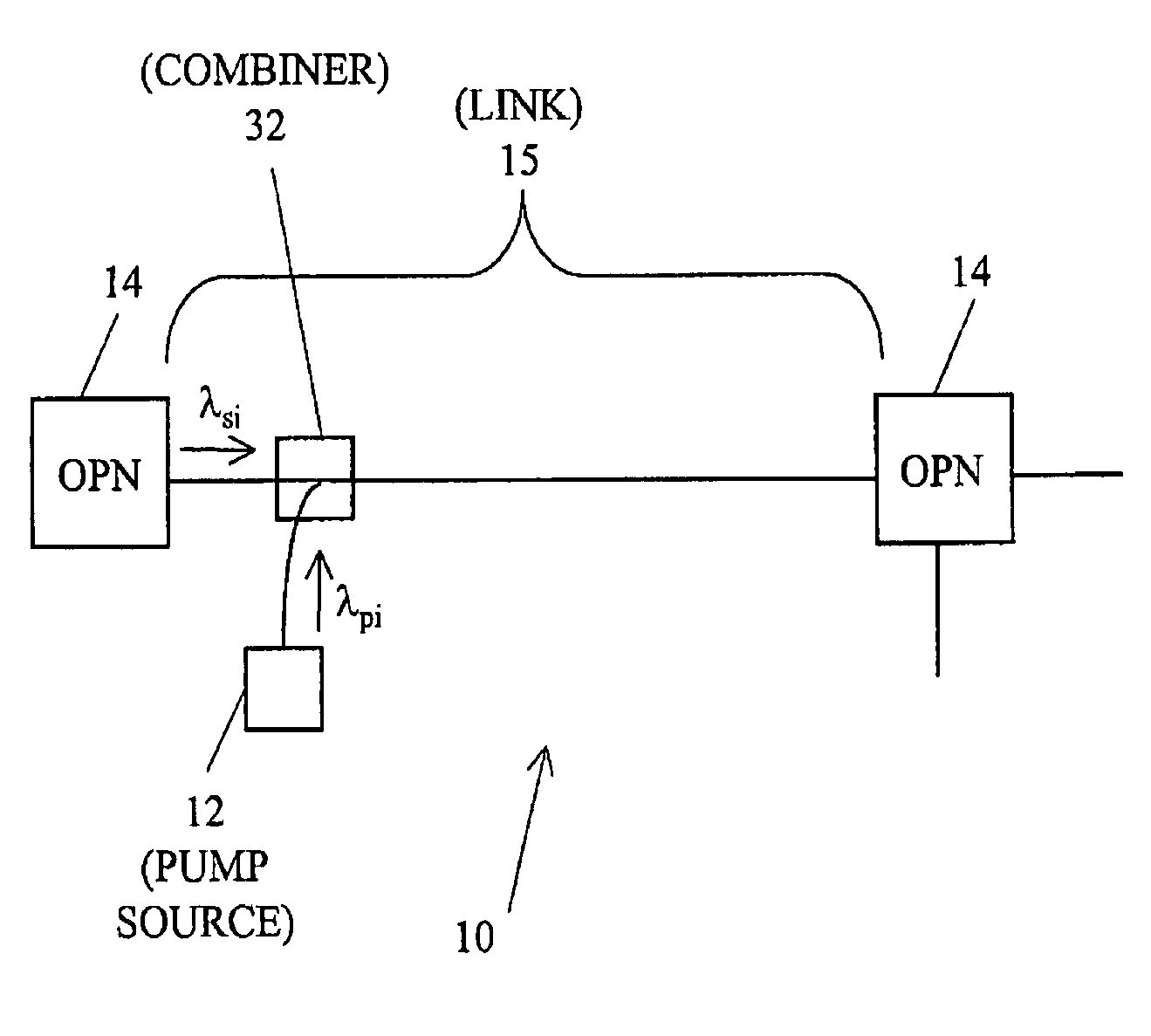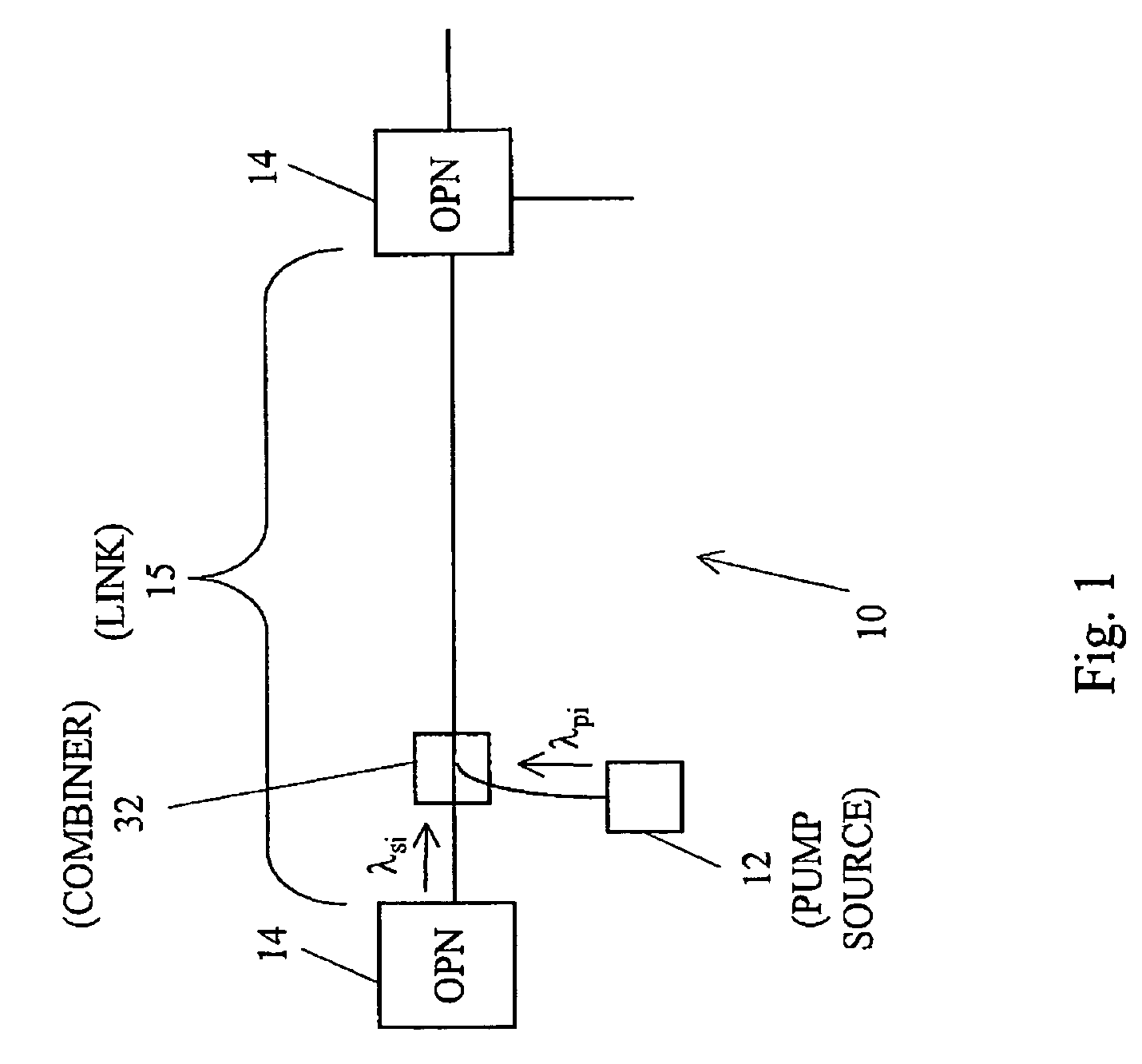Optical transmission systems including optical amplifiers, apparatuses and methods
a technology of optical amplifiers and optical transmission systems, applied in the field of optical transmission systems, can solve the problems of limiting the performance of the system, and the optical fiber is not a perfect transmitter of electromagnetic radiation in the optical spectrum, so as to improve the performance and reliability, improve the performance of the composite filter, and reduce the noise of the pump source
- Summary
- Abstract
- Description
- Claims
- Application Information
AI Technical Summary
Benefits of technology
Problems solved by technology
Method used
Image
Examples
Embodiment Construction
[0031]FIG. 1 shows an embodiment of an optical system 10, in which an optical energy pump source 12 is deployed between two optical nodes 14. The optical system 10 can be controlled by a network management system 16 and pump sources 12 configured to operate in one or more serially connected point to point links (FIG. 1) or in multi-dimensional networks (FIG. 2). The network management system 16 can communicate with the various nodes and elements in the optical systems 10 via wide area, data communication networks external to the system 10 and / or supervisory optical channels within the system 10.
[0032]The optical nodes 14 can be interconnected optically via guided and unguided transmission media, which is typically optical fiber waveguide 18. Optical amplifiers 20 typically will be provided along optical links 15 of sufficient length where amplification will be required to overcome optical signal attenuation or proximate other components to overcome component losses in the system 10....
PUM
 Login to View More
Login to View More Abstract
Description
Claims
Application Information
 Login to View More
Login to View More - R&D
- Intellectual Property
- Life Sciences
- Materials
- Tech Scout
- Unparalleled Data Quality
- Higher Quality Content
- 60% Fewer Hallucinations
Browse by: Latest US Patents, China's latest patents, Technical Efficacy Thesaurus, Application Domain, Technology Topic, Popular Technical Reports.
© 2025 PatSnap. All rights reserved.Legal|Privacy policy|Modern Slavery Act Transparency Statement|Sitemap|About US| Contact US: help@patsnap.com



